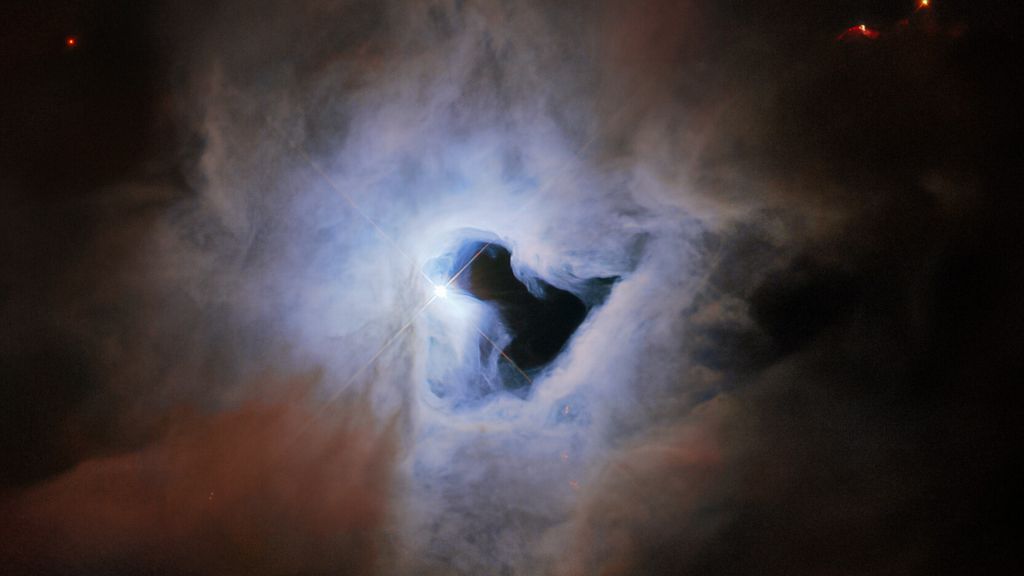Hubble Space Telescope has continued to observe the Universe and reveal new images for humanity. In its most recent image, the sophisticated space telescope captured the reflection nebula named NGC 1999. On October 24, NASA and the European Space Agency released this fascinating image of a swirling cloud of gas and dust. A statement released by ESA revealed that the captured nebula exists as a relic of a star’s formation which can be seen at the center of the image.
The image also reveals a dark void in the heart of the nebula. When you closely observe this nebula, you will see that it resembles a keyhole. NGC 1999 was first captured in 1999 by the Hubble Space Telescope and astronomers observed closely and identify the dark central region as a “Bok globule.” Further analyses enabled scientists to identify these globes as cold clouds of gas, dust, and other molecules.
These molecules have remained extremely dense and they block light from passing across them. Further observations enable scientists to realize that the dark region is an empty space. Currently, scientists are still struggling to determine the origin of this dark region. However, studies enabled astronomers to conclude that the nebula is the leftover material that remained from the star’s formation.
Scientists also discovered that the nebula is brightened by the newborn star named V380 Orion. This fascinating star exists as a white-colored star with intense heat of about 18,000 degrees Fahrenheit (10,000 degrees Celsius) on its surface. Comparing this star with the sun, scientists realize that it has twice the temperature of our star. The star is also estimated at about 3.5 stellar masses. Future observations will enable our scientists to learn more about this star.

The nebula NGC 1999 is located close to the Orion Nebula and it is about 1,500 light-years away from earth. The nebula exists in an active star-forming region of the Milky Way Galaxy. This new image of the nebula was captured using Hubble’s Wide Field Planetary Camera 3. This powerful instrument was built with a combination of ultraviolet, visible, and near-infrared sensors to enable it to capture detailed images of any cosmic body. After Hubble used its powerful instrument to capture this nebula, it transmitted the image as archival data.
Scientists were able to create this image using the archival data obtained from the space telescope. When it comes to capturing the image of nebulae, the infrared sensor of the Hubble space telescope is the best component for the job, as other sensors cannot observe beyond the clouds of dust to the stars behind or within the nebula.
But unlike the Hubble Space Telescope with a lot of limitations, NASA’s James Webb Space Telescope is filling the gap with more detailed images of cosmic objects. Webb’s latest image of the Pillar of Creation shows the actual difference between the two most sophisticated space telescopes. We should be expecting more beautiful images from both telescopes in the future.




